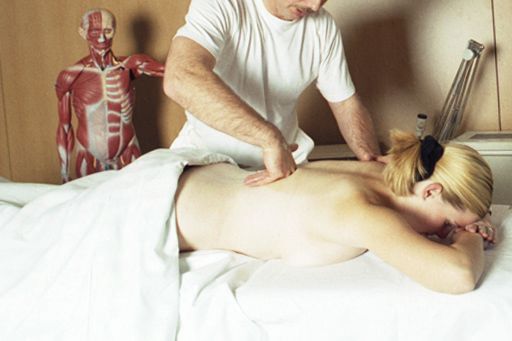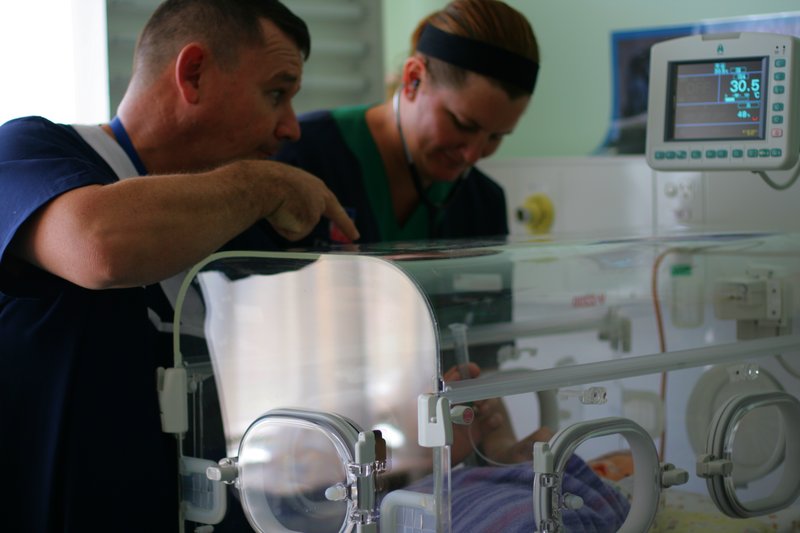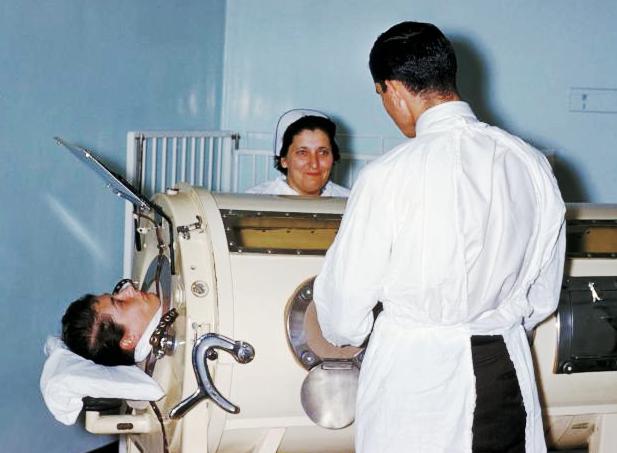|
Pediatric Intensive Care Unit
A pediatric intensive care unit (also paediatric), usually abbreviated to PICU (), is an area within a hospital specializing in the care of critically ill infants, children, teenagers, and young adults aged 0–21. A PICU is typically directed by one or more pediatric intensivists or PICU consultants and staffed by doctors, nurses, and respiratory therapists who are specially trained and experienced in pediatric intensive care. The unit may also have nurse practitioners, physician assistants, physiotherapists, social workers, child life specialists, and clerks on staff, although this varies widely depending on geographic location. The ratio of professionals to patients is generally higher than in other areas of the hospital, reflecting the acuity of PICU patients and the risk of life-threatening complications. Complex technology and equipment is often in use, particularly mechanical ventilators and patient monitoring systems. Consequently, PICUs have a larger operating budge ... [...More Info...] [...Related Items...] OR: [Wikipedia] [Google] [Baidu] |
Psychiatric Intensive Care Unit
Psychiatric Intensive Care Units or PICUs are specialist twenty-four hour inpatient wards that provide intensive assessment and comprehensive treatment to individuals during the most acute phase of a serious mental illness. Most individuals only stay on PICU wards for a very short time and are moved as soon as the crisis is over or the risky behaviours are under control. 2014 guidance says that the maximum length of stay should be 8 weeks. Normally, patients are discharged to acute psychiatric wards, but some patients go straight home. PICUs are locked and more secure wards, and have a low patient capacity when compared to open psychiatric wards. They have higher levels of staffing and are usually single-sex. PICUs have a diverse range of staff, including: mental health nurses, psychiatrists, psychologists, pharmacists, occupational therapists, social workers, activities co-ordinators, health care support workers, and ward managers. As a facility for the most disturbed p ... [...More Info...] [...Related Items...] OR: [Wikipedia] [Google] [Baidu] |
LCCN
The Library of Congress Control Number (LCCN) is a serially based system of numbering cataloged records in the Library of Congress, in the United States. It is not related to the contents of any book, and should not be confused with Library of Congress Classification (LCC). History The LCCN numbering system has been in use since 1898, at which time the acronym LCCN originally stood for Library of Congress Card Number. It has also been called the Library of Congress Catalog Card Number, among other names. The Library of Congress prepared cards of bibliographic information for their library catalog and would sell duplicate sets of the cards to other libraries for use in their catalogs. This is known as centralized cataloging. Each set of cards was given a serial number to help identify it. Although most of the bibliographic information is now electronically created, stored, and shared with other libraries, there is still a need to identify each unique record, and the LCCN conti ... [...More Info...] [...Related Items...] OR: [Wikipedia] [Google] [Baidu] |
Physical Therapy
Physical therapy (PT), also known as physiotherapy, is a healthcare profession, as well as the care provided by physical therapists who promote, maintain, or restore health through patient education, physical intervention, disease prevention, and health promotion. Physical therapist is the term used for such professionals in the United States, and physiotherapist is the term used in many other countries. The career has many specialties including musculoskeletal, orthopedics, cardiopulmonary, neurology, endocrinology, sports medicine, geriatrics, pediatrics, women's health, wound care and electromyography. PTs practice in many settings, both public and private. In addition to clinical practice, other aspects of physical therapy practice include research, education, consultation, and health administration. Physical therapy is provided as a primary care treatment or alongside, or in conjunction with, other medical services. In some jurisdictions, such as the United Kin ... [...More Info...] [...Related Items...] OR: [Wikipedia] [Google] [Baidu] |
Pharmacist
A pharmacist, also known as a chemist in English in the Commonwealth of Nations, Commonwealth English, is a healthcare professional who is knowledgeable about preparation, mechanism of action, clinical usage and legislation of medications in order to dispense them safely to the public and to provide consultancy services. A pharmacist also often serves as a primary care provider in the community and offers services, such as health screenings and immunizations. Pharmacists undergo university or graduate-level education to understand the biochemical mechanisms and actions of drugs, drug uses, therapeutic roles, side effects, potential drug interactions, and monitoring parameters. In developing countries, a diploma course from approved colleges qualifies one for pharmacist role. This is mated to anatomy, physiology, and pathophysiology. Pharmacists interpret and communicate this specialized knowledge to patients, physicians, and other health care providers. Among other licensing ... [...More Info...] [...Related Items...] OR: [Wikipedia] [Google] [Baidu] |
Intensive Care Units
An intensive care unit (ICU), also known as an intensive therapy unit or intensive treatment unit (ITU) or critical care unit (CCU), is a special department of a hospital or health care facility that provides intensive care medicine. An intensive care unit (ICU) was defined by the task force of the World Federation of Societies of Intensive and Critical Care Medicine as "an organized system for the provision of care to critically ill patients that provides intensive and specialized medical and nursing care, an enhanced capacity for monitoring, and multiple modalities of physiologic organ support to sustain life during a period of life-threatening organ system insufficiency." Patients may be referred directly from an emergency department or from a ward if they rapidly deteriorate, or immediately after surgery if the surgery is very invasive and the patient is at high risk of complications. History In 1854, Florence Nightingale left for the Crimean War, where triage was used ... [...More Info...] [...Related Items...] OR: [Wikipedia] [Google] [Baidu] |
Rapport
Rapport ( ; ) is a close and harmonious relationship in which the people or groups concerned are "in sync" with each other, understand each other's feelings or ideas, and communicate smoothly. The word derives from the French language, French verb which means literally to carry something back (in the sense of how people relate to each other: what one person sends out the other sends back). For example, people with rapport may realize that they share similar values, beliefs, knowledge, or behaviors around politics, music, or sports. This may also mean that they engage in reciprocal behaviors such as posture mirroring or increased coordination in their verbal and nonverbal interactions. Rapport has been shown to have benefits for psychotherapy and medicine, negotiation, education, and tourism, among others. In each of these cases, the rapport between members of a dyad (e.g. a teacher and student or doctor and patient) allows the participants to coordinate their actions and establi ... [...More Info...] [...Related Items...] OR: [Wikipedia] [Google] [Baidu] |
2022–2023 Pediatric Care Crisis
In the waning months of 2022, the first northern hemisphere autumn with the nearly full relaxation of public health precautions related to the COVID-19 pandemic, hospitals in the United States and Canada Canada is a country in North America. Its Provinces and territories of Canada, ten provinces and three territories extend from the Atlantic Ocean to the Pacific Ocean and northward into the Arctic Ocean, making it the world's List of coun ... began to see overwhelming numbers of pediatric care patients, primarily driven by a massive upswing in respiratory syncytial virus (RSV) cases, but also Influenza, flu, rhinovirus, enterovirus, and SARS-CoV-2. With high levels of Hand washing, hand-washing, Face masks during the COVID-19 pandemic, mask-wearing, and Social distancing, social isolation during the early years of the pandemic, children born during this period had particularly low levels of exposure to RSV, with public health professionals reporting extremely low ... [...More Info...] [...Related Items...] OR: [Wikipedia] [Google] [Baidu] |
Society Of Critical Care Medicine
A society () is a group of individuals involved in persistent social interaction or a large social group sharing the same spatial or social territory, typically subject to the same political authority and dominant cultural expectations. Societies are characterized by patterns of relationships (social relations) between individuals who share a distinctive culture and institutions; a given society may be described as the sum total of such relationships among its constituent members. Human social structures are complex and highly cooperative, featuring the specialization of labor via social roles. Societies construct roles and other patterns of behavior by deeming certain actions or concepts acceptable or unacceptable—these expectations around behavior within a given society are known as societal norms. So far as it is collaborative, a society can enable its members to benefit in ways that would otherwise be difficult on an individual basis. Societies vary based on level of ... [...More Info...] [...Related Items...] OR: [Wikipedia] [Google] [Baidu] |
American Academy Of Pediatrics
The American Academy of Pediatrics (AAP) is the largest professional association of pediatricians in the United States. It is headquartered in Itasca, Illinois, and maintains an office in Washington, D.C. The AAP has published hundreds of policy statements, ranging from advocacy issues to Practice of medicine, practice recommendations. Background The Academy was founded in 1930 by 35 pediatricians to address pediatric healthcare standards. , it has 67,000 members in primary care and sub-specialist areas. Qualified pediatricians can become fellows (FAAP). The Academy runs continuing medical education (CME) programs for pediatricians and Subspecialty, sub-specialists. The Academy is divided into 14 departments and 26 divisions. Publications It has the largest pediatric publishing program in the world, with more than 300 titles for consumers and over 500 titles for physicians and other healthcare professionals. These publications include electronic products, professional referenc ... [...More Info...] [...Related Items...] OR: [Wikipedia] [Google] [Baidu] |
Anesthesiology
Anesthesiology, anaesthesiology or anaesthesia is the medical specialty concerned with the total perioperative medicine, perioperative care of patients before, during and after surgery. It encompasses anesthesia, intensive care medicine, critical emergency medicine, and pain medicine. A physician specialized in anesthesiology is called an anesthesiologist, anaesthesiologist, or anaesthetist, #Terminology, depending on the country. In some countries, the terms are synonymous, while in other countries, they refer to different positions and ''anesthetist'' is only used for non-physicians, such as nurse anesthetists. The core element of the specialty is the prevention and mitigation of pain and distress using various anesthetic agents, as well as the monitoring and maintenance of a patient's vital functions throughout the perioperative period. Since the 19th century, anesthesiology has developed from an experimental area with non-specialist practitioners using novel, untested drugs a ... [...More Info...] [...Related Items...] OR: [Wikipedia] [Google] [Baidu] |
Mechanical Ventilation
Mechanical ventilation or assisted ventilation is the Medicine, medical term for using a ventilator, ventilator machine to fully or partially provide artificial ventilation. Mechanical ventilation helps move air into and out of the lungs, with the main goal of helping the delivery of oxygen and removal of carbon dioxide. Mechanical ventilation is used for many reasons, including to protect the airway due to mechanical or neurologic cause, to ensure adequate oxygenation, or to remove excess carbon dioxide from the lungs. Various healthcare providers are involved with the use of mechanical ventilation and people who require ventilators are typically monitored in an intensive care unit. Mechanical ventilation is termed invasive if it involves an instrument to create an airway that is placed inside the trachea. This is done through an endotracheal tube or nasotracheal tube. For non-invasive ventilation in people who are conscious, face or nasal masks are used. The two main types o ... [...More Info...] [...Related Items...] OR: [Wikipedia] [Google] [Baidu] |
Poliomyelitis
Poliomyelitis ( ), commonly shortened to polio, is an infectious disease caused by the poliovirus. Approximately 75% of cases are asymptomatic; mild symptoms which can occur include sore throat and fever; in a proportion of cases more severe symptoms develop such as headache, neck stiffness, and paresthesia. These symptoms usually pass within one or two weeks. A less common symptom is permanent paralysis, and possible death in extreme cases.. Years after recovery, post-polio syndrome may occur, with a slow development of muscle weakness similar to what the person had during the initial infection. Polio occurs naturally only in humans. It is highly infectious, and is spread from person to person either through fecal–oral transmission (e.g. poor hygiene, or by ingestion of food or water contaminated by human feces), or via the oral–oral route. Those who are infected may spread the disease for up to six weeks even if no symptoms are present. The disease may be diagnosed by ... [...More Info...] [...Related Items...] OR: [Wikipedia] [Google] [Baidu] |






